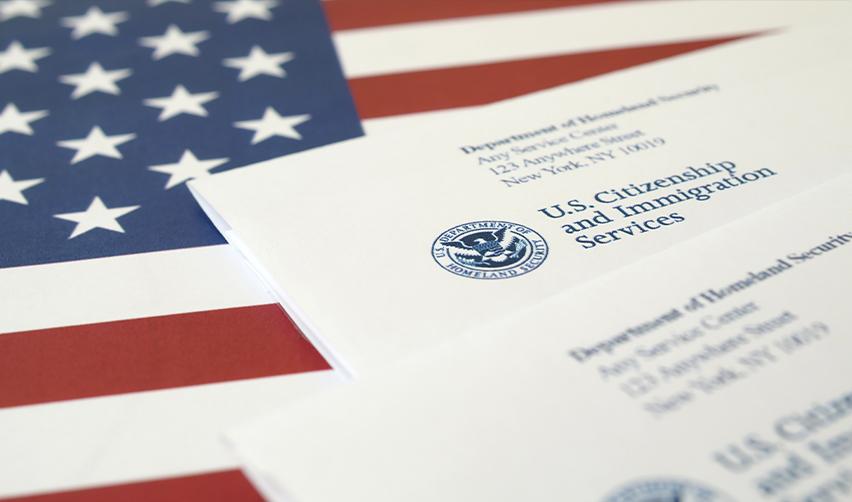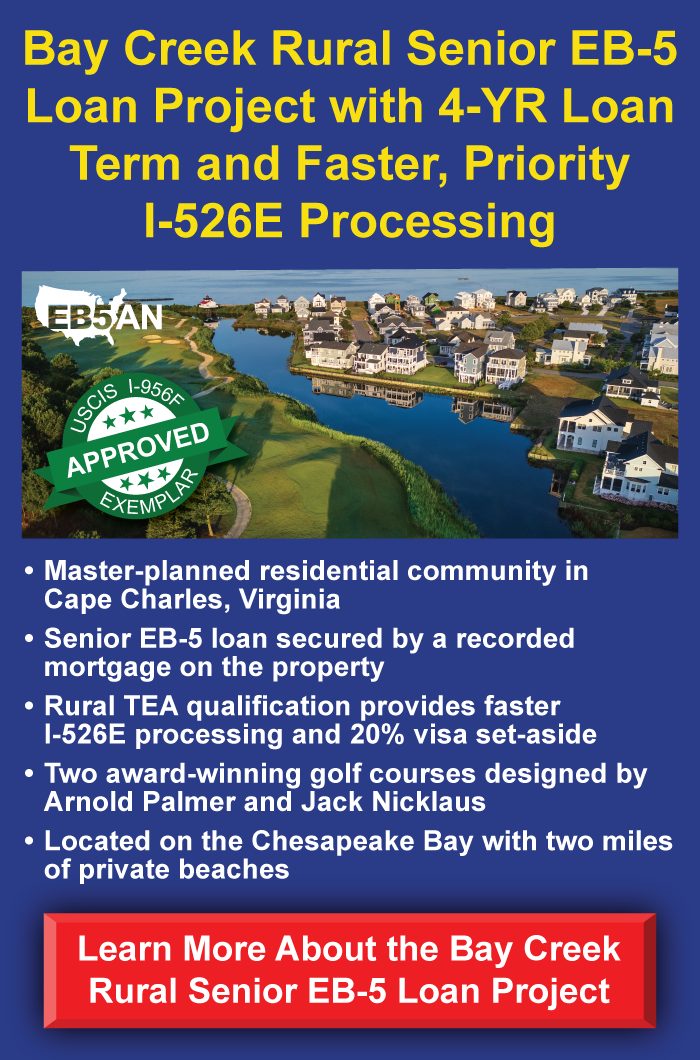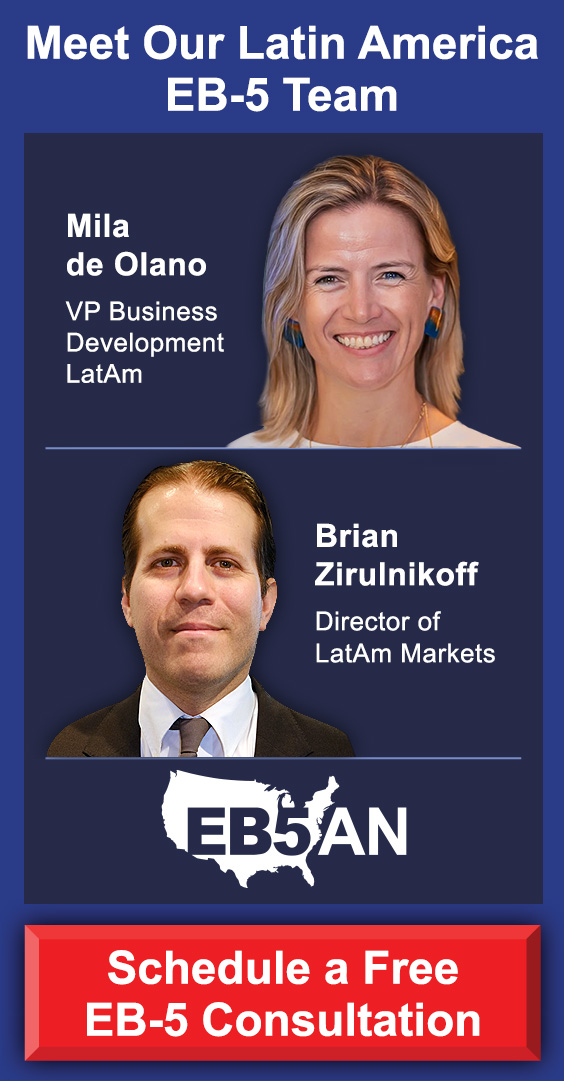Since the implementation of the EB-5 Reform and Integrity Act of 2022 (RIA), the landscape for EB-5 investors has changed dramatically. The act’s introduction of new filing categories, clearer adjudication standards, and project-level oversight has resulted in historic approval rates and timelines.
Crucially, though, these changes have not benefited all projects and investors equally.
For potential EB-5 investors, understanding these changes is essential. The latest United States Citizenship and Immigration Services (USCIS) data offers deep insight into the petition approval landscape. This data shows that rural EB-5 investments are clearly being prioritized, both in terms of volume and speed of processing, while urban filings are facing significant delays.
To give investors a better understanding of current EB-5 trends, this article breaks down how USCIS is processing EB-5 petitions under the RIA and the implications for investors deciding between rural and urban EB-5 projects.
The RIA: A Game-Changer for Petition Processing
97% Approval Rate: The Best in EB-5 History
Rural Projects Are Being Prioritized
Urban Petitions Are Delayed
Beyond Priority Processing: Why Is Rural Processing Faster?
What Should Investors Do?
Making the Smart Investment Choice
The RIA: A Game-Changer for Petition Processing
Prior to the RIA, the EB-5 program suffered from various inconsistencies. Approval rates for I-526 petitions often hovered below 75%, and adjudication standards were vague, leaving room for uncertainty.
To address these issues, the RIA codified clear standards for investors and their petitions.
Firstly, all EB-5 projects must now file Form I-956F. This document provides USCIS with the information it needs regarding the EB-5 offering, such as its business plan background details on the individuals who will have significant involvement in the project and its business.
Similarly, the RIA dictates that project and investor petitions include detailed job forecasts and capital deployment plans. This documentation shows USCIS that investors’ funds will be used to create the jobs required to qualify for permanent residency.
Lastly, the RIA established more rigorous documentation standards for source of funds tracking to ensure that the funds used in EB-5 projects come from legitimate sources.
While such increased processing standards may seem detrimental to approvals, these higher standards have likely led to better, more comprehensive petitions—which, in turn, have yielded a significant increase in approval rates and more predictability for investors, regional centers, and immigration attorneys.
97% Approval Rate: The Best in EB-5 History
According to USCIS data spanning from April 2022 through January 2025, the overall approval rate for I-526E petitions is approximately 97%. This is an unprecedented figure and suggests that the changes introduced under the RIA have substantially improved the quality of submissions.
It’s worth noting that this percentage may drop slightly once pending requests for evidence and notices of intent to deny are resolved. However, even after accounting for potential denials, approval rates remain significantly higher than in the pre-RIA era.
Rural Projects Are Being Prioritized
One of the most important features of the RIA is priority processing for rural EB-5 projects.
The law mandates that USCIS must process rural petitions before equivalently timed petitions in other categories, and the latest data confirms this is happening in practice.
From April 2022 to January 2025, 1,100+ rural petitions were adjudicated, representing ~27% of all rural filings. Over the same time period, only 361 urban petitions were adjudicated, just ~7% of all urban filings.
Despite more urban petitions being filed over this span, nearly three times as many rural petitions were processed.
The numbers are even more pronounced when we narrow in our focus. From February 2023 to January 2025, USCIS adjudicated 967 rural petitions (24% of all filings), while only 74 urban petitions (1.5%) were processed. That’s a 13:1 ratio in favor of rural processing.
Clearly, USCIS is upholding the RIA’s mandate. Rural projects are being pushed to the front of the line.
Urban Petitions Are Delayed
While rural filings have enjoyed quick turnaround times of 8 to 10 months on average, urban I-526E petitions are facing long queues.
Recent urban investors may consider seeking legal action, such as mandamus lawsuits, rather than standard adjudication. Without taking such measures, investors with urban petitions may wait years unless USCIS changes its pace or processing policy.
Notably, this processing gap is further widening. As of early 2025, fewer than 2% of urban I-526E petitions filed since February 2023 had been adjudicated.
Beyond Priority Processing: Why Is Rural Processing Faster?
The first, and perhaps most significant, reason for rural petitions being processed so quickly is of course the priority processing implemented by the RIA. But this is far from the only contributing factor.
Rural petitions have twice the yearly quota compared to their urban counterparts: 20% of all EB-5 visas are set aside for rural investors, whereas only 10% is set aside for urban investors.
Additionally, when compared to urban petitions, fewer rural filings early on created a manageable initial backlog. Combined with rural’s higher annual allocation, the rural category remains comparatively undersubscribed.
This last point is especially important: Because rural EB-5 visas have their own quota and are not yet in high demand, the likelihood of a backlog forming is low, unlike in the urban category.
What Should Investors Do?
What investors should do with this information depends on where they are in their EB-5 journey and/or what project they have already invested in or plan on choosing.
Investors Already in Rural Projects
You’re in the strongest position, benefiting from faster processing, lower risk of a backlog, and higher odds of timely Green Card issuance.
You should simply keep track of your petitions, project, and invested funds.
Investors in Urban Projects
Urban investors, particularly those with a stalled application, should consider speaking to an immigration attorney about the possibility of a mandamus filing to compel USCIS to act.
You should also check each monthly Visa Bulletin to make sure your category remains current.
Prospective Investors
If you’re looking to get started, you should strongly consider opting for a rural project. All numbers point to this being the better option.
Importantly, not all rural projects are created equal. Investors should prioritize projects that come from regional centers with a strong record of compliance.
Making the Smart Investment Choice
The USCIS processing trends under the RIA send a clear message: Rural EB-5 investments offer faster and more reliable pathways to U.S. permanent residency. This is especially true for Indian and Chinese investors, who have historically faced greater waiting times due to the high visa demand of their countries. However, the RIA’s visa allocation and priority processing have alleviated some of these challenges.
Indeed, recent USCIS data shows that 52% of Chinese EB-5 filings and 47% of Indian filings since the enactment of the RIA have been in the rural category, a clear signal that savvy investors are already pivoting toward the safer option.
With approval rates at an all-time high and rural petitions being prioritized, the EB-5 program is now more transparent and accessible, at least for those who navigate it strategically.
At EB5AN, transparency is of the utmost importance to us. EB5AN has helped more than 2,700 families from 70+ countries become lawful permanent residents of the United States. Our expert team has more than a decade of experience, and we offer clients first-rate, low-risk EB-5 regional center projects with a 100% USCIS project approval rate.
If you would like to know more about how you can benefit from investing in an EB5AN rural project, book a free call with our expert team today.











